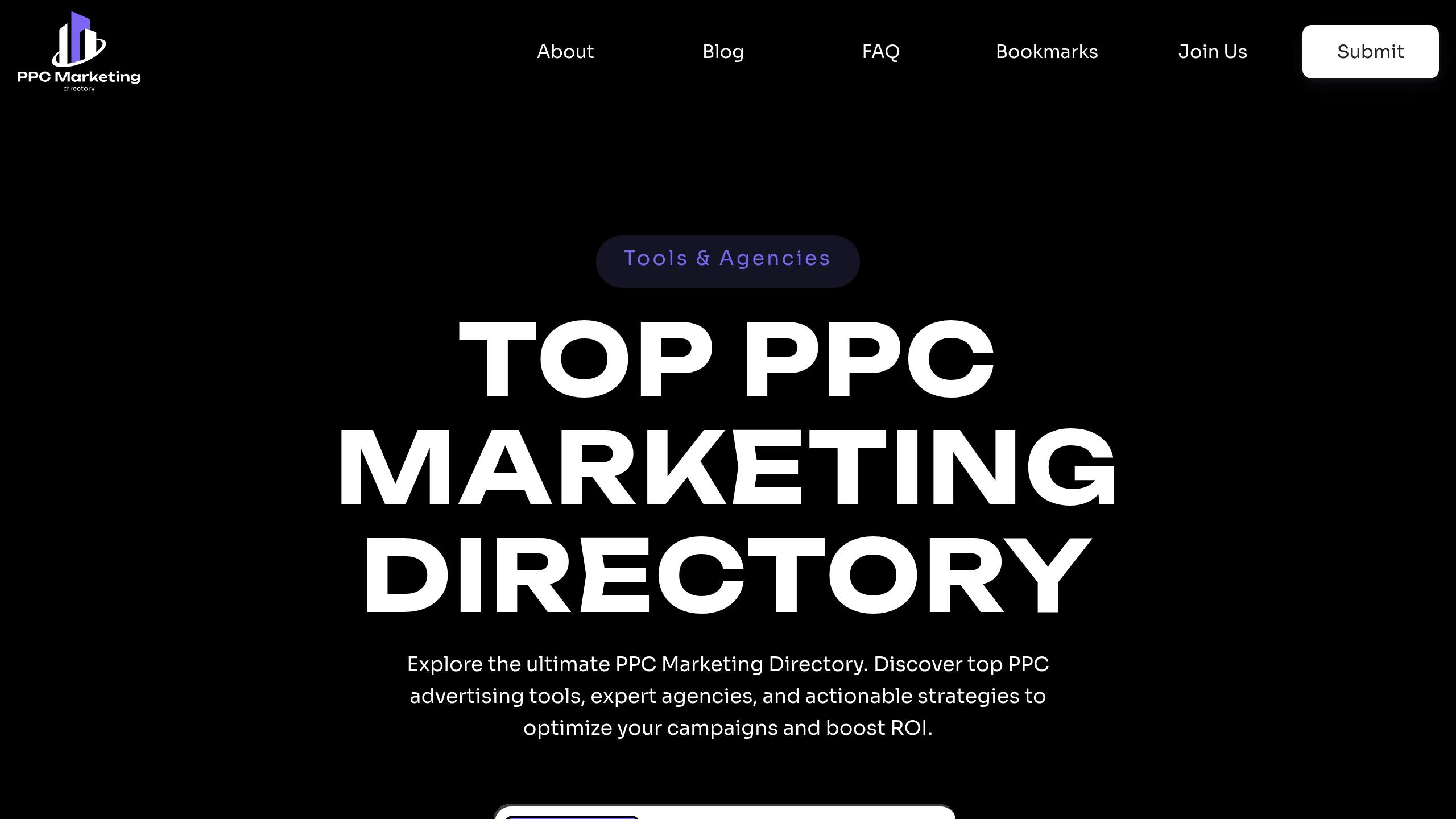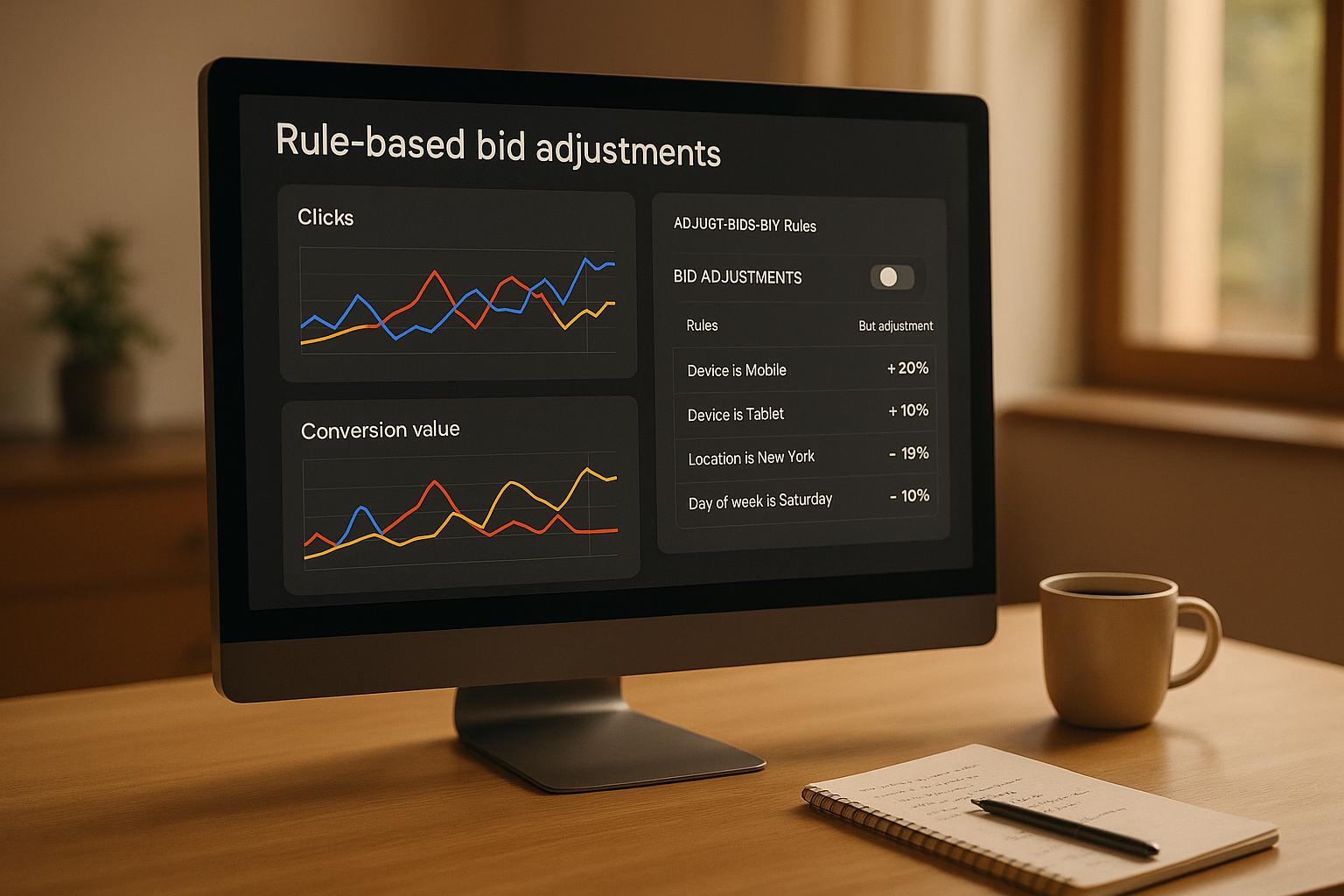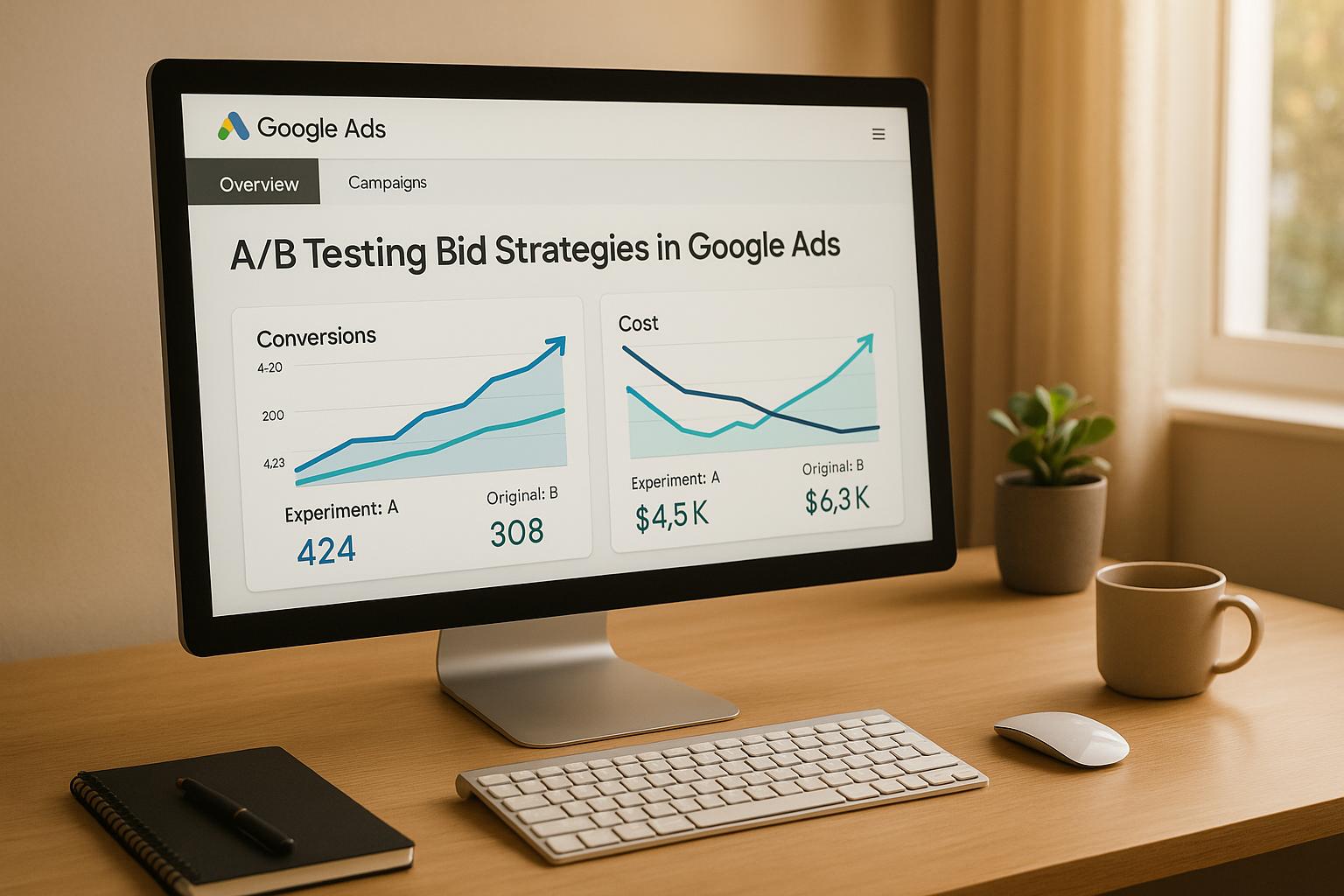Cost Per Acquisition (CPA) in PPC advertising measures the cost to acquire one customer through paid campaigns. It ties ad spend directly to conversions, helping evaluate profitability and optimize campaigns. Here's a quick overview:
- Definition: CPA = Total Ad Spend ÷ Number of Conversions.
- Key Difference: CPA focuses on single campaigns; CAC (Customer Acquisition Cost) includes all marketing costs.
- Importance: Lower CPA means higher ROI if aligned with Customer Lifetime Value (LTV).
- Tools: Google Ads, HubSpot, and others help track and manage CPA.
Quick Comparison: CPA vs. CAC
| Metric | Scope | Costs Included | Use |
|---|---|---|---|
| CPA | Single campaign | Ad costs only | Optimize campaigns |
| CAC | Entire organization | All marketing costs | Assess scalability |
Reducing CPA involves smart bidding, better landing pages, and precise targeting. For example, using Google's Target CPA bidding or improving landing page load times can cut costs significantly. Start by tracking CPA accurately and aligning it with your business goals.
Cost Per Acquisition In Google Ads

How to Calculate Your CPA
To find your CPA (Cost Per Acquisition), divide your total campaign costs by the number of conversions. Here's a simple example:
| Channel | Campaign Cost | Conversions | CPA |
|---|---|---|---|
| Google Search | $800 | 40 | $20 |
| Meta Ads | $500 | 20 | $25 |
| Display Network | $300 | 4 | $75 |
Mistakes to Watch Out For
When calculating CPA, avoid these common errors:
- Forgetting to include creative or agency fees in your total spend
- Counting unqualified leads as conversions
- Overlooking cross-device attribution, which can skew results
Tools for Better CPA Tracking
Accurate tracking is crucial and often requires specialized tools. Many PPC platforms offer automated CPA tracking. Here are some options:
| Tool | Best For | Key Features |
|---|---|---|
| Google Ads Conversion Tracking | Search campaigns | Free, integrates seamlessly |
| Microsoft Advertising UET | Bing/Yahoo traffic | Tracks across devices |
| TripleWhale | Ecommerce | Multi-touch attribution |
| HubSpot Marketing Hub | B2B leads | Full-funnel analytics |
Instead of relying on industry averages, focus on your own business goals and metrics. According to WordStream, campaigns with proper conversion tracking tend to achieve 22% better CPA performance [5].
CPA's Role in Campaign Success
Calculating CPA reveals how your campaigns are performing, but digging deeper into its connection with profitability turns those numbers into actionable strategies.
CPA and Profit Margins
Your CPA has a direct impact on your profit margins and can guide how you allocate budgets across different channels. When assessing campaign results, think about how varying CPA levels influence your overall earnings:
| CPA Level | LTV Needed | Effect on Profit Margin |
|---|---|---|
| $50 | $150+ | High profit potential |
| $100 | $300+ | Moderate profitability |
| $150 | $450+ | Risk of shrinking returns |
Using CPA for Budget Decisions
Using CPA data wisely can make a big difference in your campaign's ROI. For example, one SaaS company managed to cut its CPA by 44% through focused conversion rate optimization and smarter bid strategies, leading to a threefold ROI increase over a single quarter [7][6].
To optimize your budget:
- Monitor CPAs by channel using campaign tags.
- Aim to keep CPA at or below 25% of LTV for your key campaigns.
- Phase out campaigns that underperform for three months straight.
These steps lay the groundwork for more targeted CPA reduction tactics, which we’ll dive into next.
sbb-itb-89b8f36
5 Ways to Reduce Your CPA
Cutting down your Cost Per Acquisition (CPA) takes a mix of smart bidding, well-designed landing pages, and precise targeting. Let’s dive into some tested methods that can help you achieve lower CPAs.
Bid Management Tips
Smart bidding automation can significantly improve your CPA. Google's Target CPA Smart Bidding, for instance, uses machine learning to adjust bids in real-time based on how likely a conversion is. To make the most of it, aim for at least 30 conversions per month [3][4].
Here’s how different bidding strategies can influence CPA:
| Strategy | Impact |
|---|---|
| Dayparting | 20% lower CPA during peak hours |
| Portfolio Bidding | Stays within 10% of target CPA |
| Placement Exclusions | Cuts CPA by $5-8 |
While automation can help manage costs, your landing pages play a critical role in improving conversion rates.
Landing Page Tips
Small changes to your landing pages can make a big difference. For example, placing trust signals strategically can boost conversions by 17%, according to the Baymard Institute [8][9].
Here are some proven tactics to lower CPA:
- Fast mobile load times: Pages loading in 2 seconds see 53% fewer bounce rates.
- Red call-to-action buttons: Fitness campaigns saw 21% higher conversions with this tweak.
- Consistent headlines: Aligning headlines with ad copy can reduce CPA by 12%.
One SaaS company managed to drop their CPA from $85 to $59 by using a short video demo alongside an interactive calculator [1][7].
Ad Testing and Targeting
Refining your targeting ensures your budget isn’t wasted on the wrong audience. For instance, a fitness app reduced its CPA by $22 simply by excluding certain age groups [2][3].
Using emotional appeals like “protect your family” or price anchoring such as “Save $50/mo” can also make a difference. These techniques cut CPA by 19% and boosted conversions by 33%. Adding urgency - like specific timeframes - lowered CPA by $14.
Negative keyword management is another powerful tool:
"A wedding dress retailer excluded terms like 'free' and 'rental,' cutting CPA from $143 to $107 by reducing irrelevant clicks" [7][4].
CPA Management Tools
After applying strategies to reduce CPA, using the right tools ensures you can maintain and scale these gains effectively.
Google Ads CPA Features
Google Ads offers several built-in tools to help manage CPA. These tools automate bid adjustments and targeting strategies, making it easier to hit your desired acquisition costs while driving more conversions [5].
Here are some key features:
| Feature | Function |
|---|---|
| Enhanced CPC | Adjusts bids by up to 30% based on the likelihood of a conversion. |
| Portfolio Bidding | Allows management of multiple campaigns at once for better efficiency. |
| Quality Score Monitor | Tracks ad relevance metrics to ensure your ads stay competitive. |
Google Ads also tracks performance through metrics like "Conv. value/cost" and "Cost/conv." These metrics reveal areas for improvement while ensuring campaigns remain profitable [5][6].
"Smart campaigns utilizing machine learning have shown a 22% improvement in maintaining CPA targets while scaling conversion volume."
Top PPC Marketing Directory

The Top PPC Marketing Directory highlights trusted tools that integrate with the Google Ads API for advanced optimization.
Specialized tools, such as Optmyzr, offer features like:
| Tool Type | Key Capabilities |
|---|---|
| Bid Managers | Make bid adjustments as frequently as every 15 minutes. |
| Attribution Platforms | Provide cross-channel tracking for better understanding of conversions. |
| AI Optimization Suites | Use automated rules to streamline campaign performance. |
For larger teams, tools with multi-account dashboards offer a bird's-eye view of all campaigns. Smaller businesses can benefit from pre-built templates and automated alerts, which simplify campaign management.
Combining Google Ads' native features with specialized tools can create a well-rounded system for managing CPA effectively [1][5].
Summary
CPA (Cost Per Acquisition) focuses on the efficiency of specific campaigns, while CAC (Customer Acquisition Cost) takes a broader look at overall organizational costs. This distinction allows marketers to fine-tune individual channels without losing sight of profitability.
For reference, industry averages show that search ads have a CPA of $59.18, compared to $60.76 for display ads [1][5]. These numbers can serve as benchmarks, but it’s important to adjust them based on your business model and goals.
Here’s a key insight: every point above a Quality Score of 5 reduces CPA by 16% [5]. This highlights how improving ad relevance and optimizing landing page experiences can have a big impact on acquisition costs.
FAQs
What is the cost per acquisition?
Cost per acquisition (CPA) is the amount you spend to gain one customer through a specific campaign. Unlike Customer Acquisition Cost (CAC), which includes all organizational expenses, CPA focuses solely on the spending tied to a particular campaign [1][2].
How do you calculate cost per acquisition in Google Ads?
The formula is simple: Total Ad Spend ÷ Number of Conversions. This applies to any type of conversion, whether it's a purchase, a sign-up, or another desired action [2][4].
Where to find CPA in Google Ads?
To locate your CPA data in Google Ads:
- Click on the "Tools & Settings" icon in the top right corner.
- Choose "Conversions" from the dropdown menu.
- Review metrics such as CPA, conversion rates, and conversion volumes [2].
This information is key for campaign adjustments, like those outlined in '5 Ways to Reduce Your CPA'.
What is better, CPC or CPA?
It depends on your campaign goals. CPA bidding is best for campaigns focused on return on investment (ROI) when you know the value of a conversion [1][3]. On the other hand, CPC is more suitable for campaigns aimed at increasing traffic or brand awareness [2].
| Bidding Strategy | Best For | Example Use Case |
|---|---|---|
| CPA | ROI-driven campaigns | Driving e-commerce sales |
| CPC | Awareness campaigns | Boosting brand visibility |
| Mixed | Trial and testing | Launching a new product |
What is the formula for calculating cost per acquisition?
The formula is the same: Total Ad Spend ÷ Conversions. Instead of relying on industry averages, focus on your own business margins. For precise results, ensure conversion tracking is properly set up in Google Ads [2].


